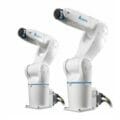According to a report from Seagate Technology, about 68 per cent of data available to enterprises goes unleveraged. Data can be a valuable resource, particularly in manufacturing, so by considering how they collect, store and interpret data, manufacturers can use this resource to its full potential. Here Mike John, technical director of industrial metrology specialist The Sempre Group, explains how manufacturers can streamline data collection and use the data they are already collecting for quality control.
Quality management is often seen as a box ticking exercise — manufacturers collect data and compile reports to prove compliance. Some high precision industries, such as medical and aerospace, must comply with increasingly stringent regulations and provide customers with a fully traceable report that proves quality throughout the product’s lifecycle. Alternatively, other industries, such as prototyping, do not experience the same demand for extensive reporting — but they can still gain real value from their data.
The problem with manual
Manual data collection is time consuming and significantly increases the risk of human error, because there is no guarantee that operators input data from one source to another accurately. By reviewing incorrect data operators might recalibrate machinery unnecessarily, stop production or allow lower quality parts to pass inspection, damaging part quality and production levels.
Monitoring quality management data can involve reams of paper that are easily misplaced, extensive filing and confusing methods to find information. While spreadsheets may appear to be more accurate, there is no guarantee that engineers will input all the data accurately. In both instances, working with isolated documents means that finding data from months or even years ago can become a laborious task that only people with access to the data files can carry out.
Automated
Unlike manual methods, automated data collection enables anyone in the business to quickly access real-time data in the same format across all systems, saving time and allowing internal and stakeholder communications to run smoothly.
By using a fully traceable, automated data collection system, manufacturers have a centralised data collection point that they can use to streamline traditionally time-consuming reporting processes. For example, by using software such as High QA Inspection Manager, engineers can complete a ballooned drawing and populate a First Article Inspection (FAI) report in one click. Automated reporting and data collection allows manufacturers to get the most out of their workforce by moving them away from repetitive work and into more skilled processes that require human intervention.
As well as proving quality assurance, manufacturers can use data to gain real insight into their manufacturing and quality processes, reviewing productivity and identifying areas for improvement. For example, if operators notice that a few parts are faulty, they can use the report to discover when the fault occurred and resolve the issue proactively, making changes that will prevent further faults. Over time this will decrease the number of defective products, reduce material waste and improve productivity so that customers can receive parts sooner.
Manufacturers can also use software and data to make proactive changes on the shop floor during production. Reaction Plan Manager, for example, is an automated instruction-based software that analyses measurement data, calculates offset and provides tool correction instruction. For example, if a part does not meet specification, the software will instruct the operator about how to adjust the machine to correct the issue. Intuitive software allows operators to carry out the recalibrations proactively without the need for time consuming data analysis or a specialised engineer to assess calibration. By adjusting tooling as soon as they notice an issue, engineers can ensure that fewer parts are manufactured out of tolerance, reducing scrap.
Seagate Technology’s report demonstrates that data is an untapped resource. In manufacturing, data could be the key to creating a more efficient, proactive and streamlined manufacturing process. As the manufacturing industry becomes more digitalised and regulated, businesses should consider how they can use the data they are already collection to their advantage.
To find out more about investing in a fully automated and unified quality management system, visit our website https://www.TheSempreGroup.com.








